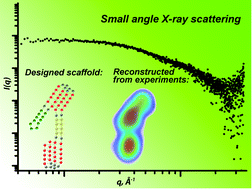Rational design of guiding elements to control folding topology in i-motifs with multiple quadruplexes†
Abstract
Nucleic acids are versatile scaffolds that accommodate a wide range of precisely defined operational characteristics. Rational design of sensing, molecular computing, nanotechnology, and other nucleic acid devices requires precise control over folding conformations in these macromolecules. Here, we report a new approach that empowers well-defined conformational transitions in DNA molecular devices. Specifically, we develop tools for precise folding of multiple DNA quadruplexes (i-motifs) within the same oligonucleotide strand. To accomplish this task, we modify a DNA strand with kinetic control elements (hairpins and double stranded stems) that fold on a much faster timescale and consequently guide quadruplexes toward the targeted folding topology. To demonstrate that such guiding elements indeed facilitate formation of the targeted folding topology, we thoroughly characterize the folding/unfolding transitions through a combination of thermodynamic techniques, size exclusion chromatography (SEC) and small-angle X-ray scattering (SAXS). Furthermore, we extend SAXS capabilities to produce a direct insight on the shape and dimensions of the folded quadruplexes by computing their electron density maps from solution scattering data.



 Please wait while we load your content...
Please wait while we load your content...